The Canon 5D MkIII arrived, but I will not be reporting on that here – it is with me for a British Journal review, and that will take a little time and will also be exclusive to the BJP in print and on iPad App. So no sneak preview anywhere else!
However, with the camera came a 70-200mm f4 Canon L IS lens. This month I picked up a very cheap 70-210mm f4 Minolta AF – the ‘beercan’ original from 1985 which has a broken lens hood, the wrong lens cap (why the hood got broken) and a slightly rough focusing travel that tends to get locked into a near or far range without having a limiter.
So, since the loaner 70-200mm from Canon was in an equally well-used state, and the question keeps being asked whether the old Minolta is a match for it, I thought I would A-B the two lenses with the Canon on the new 5D MkIII and the beercan on the Alpha 900.
I call this comparison ‘can o’beer versus a yard of L’ for reasons the product size comparison should make clear:

Of course a lot of this is the Canon lens hood (anyone with a flair for geometry will spot that the narrower, shorter Minolta hood is nearly as effective, just draw a diagonal from front left to rear right of the hood to see why). And the Canon has IS built in, as well as a focus range limiter. During operation the Canon was rather noisy, making a constant whispering sound from the IS even though the USM focusing was silent. The Minolta of course zips and clunks into focus, but is otherwise silent, and the A900 in-body stabilisation did not make anything like the same level of operating noise as the in-lens IS.
Although there is no doubt the Minolta lens is less sensitive to AF commands (if that’s the best way to put it) actual targeting a new focus point and locking on seems every bit as fast. It’s nowhere near as good as the Canon at continuous AF subject tracking, but the Canon was nowhere near as good as the Minolta/Alpha combo at user-targeted aim and focus operations. The Canon spent a lot of time being out of focus and then rapidly refocusing, with my moving targets (backyard hens, if you have them you’ll know what perfect focus test subjects they provide). The Minolta spent time staying focused and not responding much.
Reviewing the results, I can only say the Alpha/beercan combo had a better success rate. Nearly all the shots were critically sharp where a good few Canon shots either didn’t get enough IS to combat shake, or maybe the IS was actually taking the edge off sharpness. This applied particularly at closer distances, where the Minolta (210mm, front group focus and 1.1m focus distance) seemed much better than the Canon (200mm, internal focus and 1.2m minimum).
For this article, I have made 2000 pixel wide reductions from my test images. These are within the 2MB limit at high quality for images within the site. Subscribers to photoclubalpha can also access hi-res full sized images (over 70MB in total, so beware) through an additional page link provided at the end of this report.
The tree and twigs test
Our big old holly tree provides a suitably evil subject for any lens with chromatic fringe or purple fringe issues. I shot everything raw; no lens profiles were used, the conversion was done using Adobe Camera Raw 6.7Beta. Like Lightroom 4, this offers automatic analysis of CA even without requiring lens profiles. In fact, adjustable CA is entirely disabled – gone. I can tell you it works amazingly well. Lenses which have been very difficult to clean up are fixed. It isn’t even one-click – just set ‘Remove CA’ as a default, and that is it, for all lenses, for ever.
I used the tree for hand-held (with stabilisation) ISO 100 tests at f/4, f/5.6 and f/8.
I thought the beercan would be bad for fringes and CA. On the Alpha 900, it simply wasn’t. The full aperture image was surprisingly clean. The Canon lens on the MkIII actually showed more colour fringing. Both cleaned up in ACR 6.7b. As for sharpness, it seemed to me to be a draw. I picked a 3D target to avoid slight front of back focus differences influencing the result.

Above – Canon at 70mm and f/4 – click image to open 2000 pixel wide version

Above – Minolta at 70mm and f/4 (same applies, to all these example)
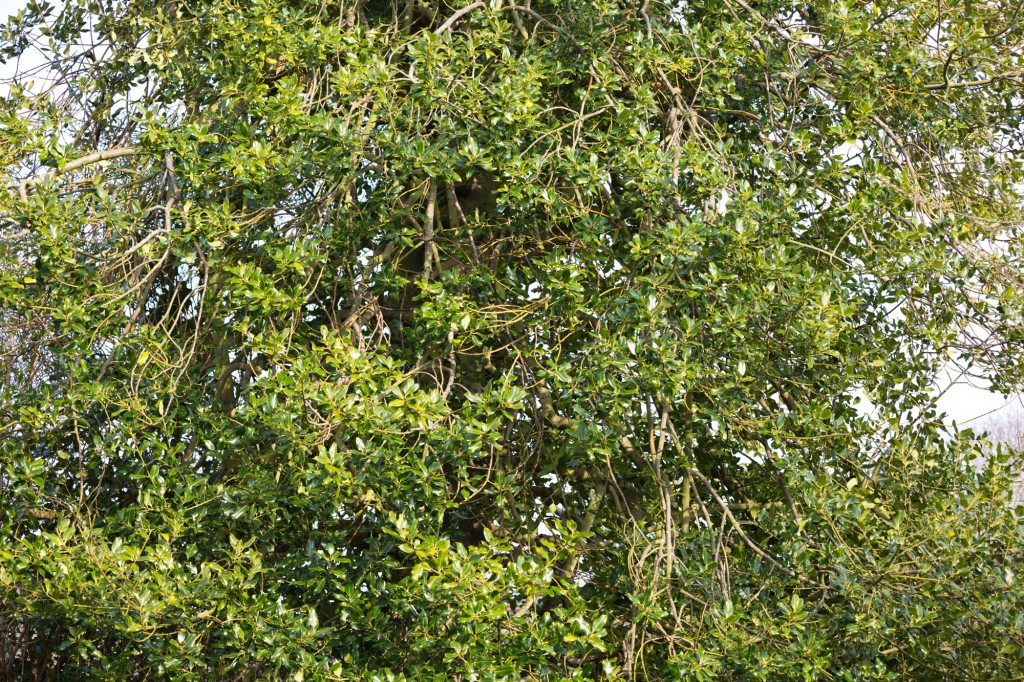
Above – Canon at f/5.6
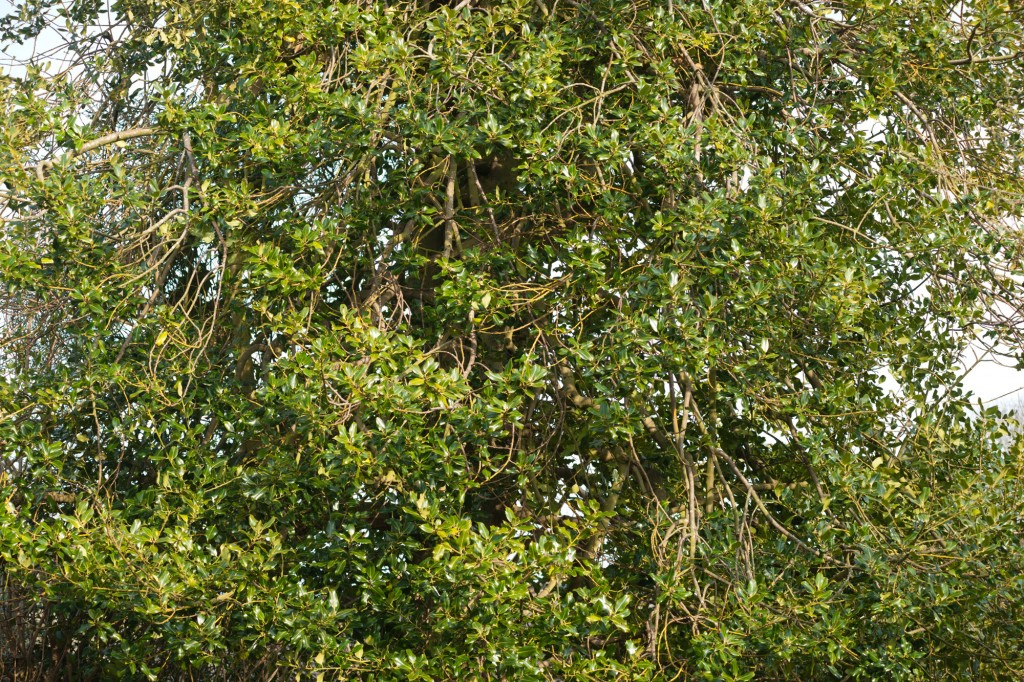
Above – Minolta at f/5.6

Above – Canon at f/8 (for the f/8 images, the ACR conversion was cut by -0.30 EV exposure, as I felt both cameras had predictably overexposed a little, but the wider apertures were left this way as it emphasises any CA – since f/8 is an optimum aperture with cameras of this resolution, I aimed for the best straight conversions)

Above – Minolta at f/8.
Long end tests, moving and static, medium to close
A range of different subjects ended up being shot on both cameras in the garden. I was, at the same time, shooting various tests on Fuji X10 and Pentax Optio WG-2. If that Pentax could shoot raw files it would be a real winner because the lens is lovely! When you start poking small cameras one or two cm away from small flowers, you realise how limiting the larger format and longer lenses can be.
But the small cameras could not catch a single decent snap of hens scratching around as I worked. They move too fast and just the focus lag along, let alone the shutter lag, stops even the best compact or pocket digitals from being useful.

Here’s a Canon shot. I took half a dozen similar shots with both cameras, slightly varying in distance and with two different hens, at f/5.6 and also some at f/8, all at maximum focal length. It would be hard to say the Canon was better as the success rate was lower. It seemed to focus faster but not as accurately, with both cameras set just to use the centre sensor (as the overall frame compositions tell you).
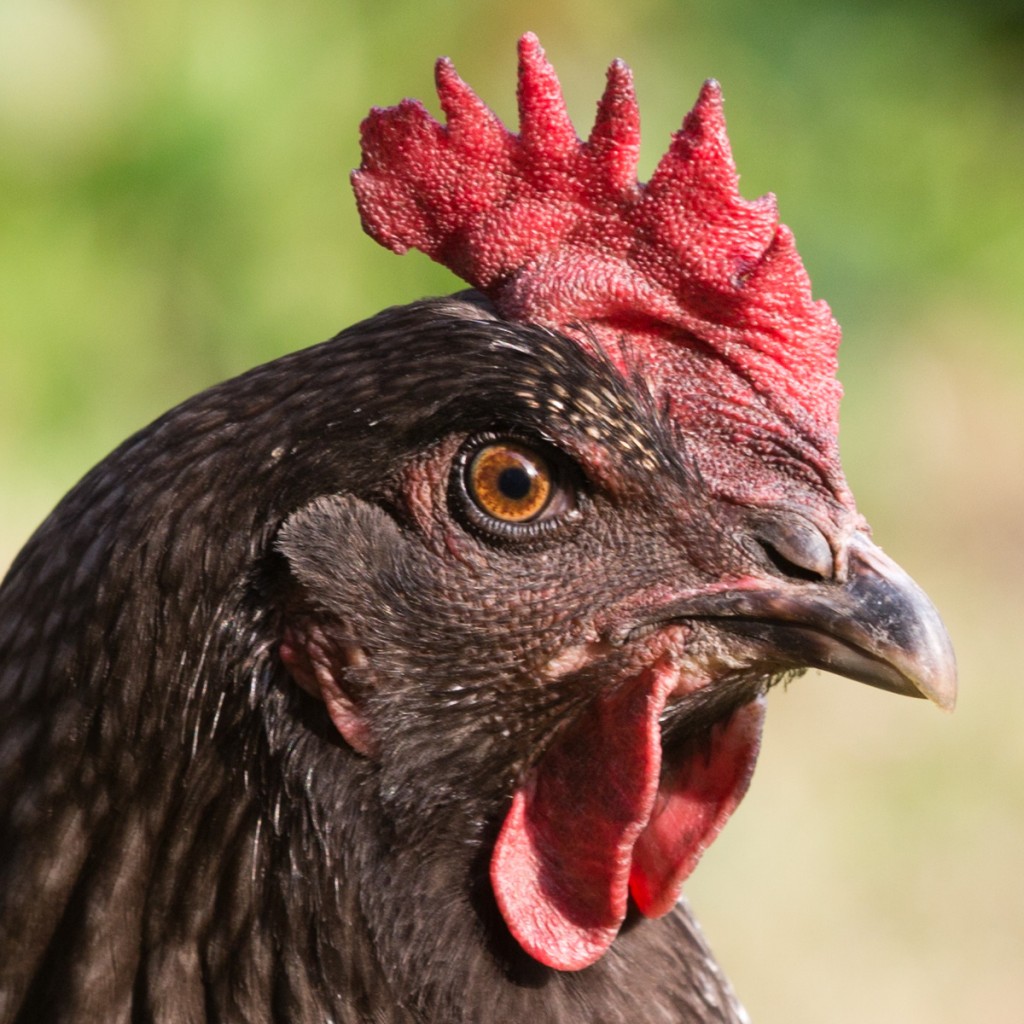
This is 50% of original pixel scale. Click the image for a 1200 pixel square, 100% clip view.
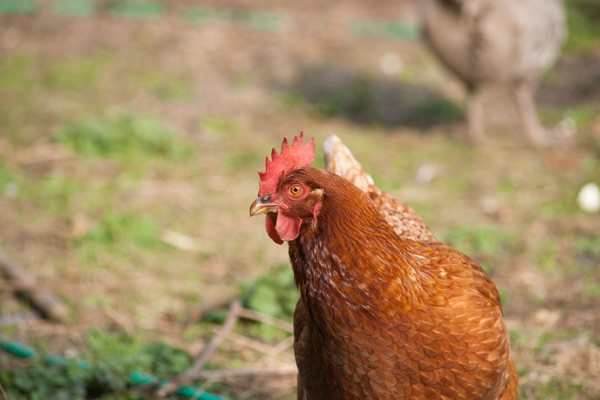
Here’s an Alpha 900 shot with the Minolta at the same settings, ISO 320 RAW, exactly the same ACR 6.7b parameters used (25, 0.5, 25, 0 Sharpening; 20, 25, 0, 25, 50 L and C NR; strong contrast curve; black point 0; Adobe Standard colour calibration; CA Correction enabled with Defringe Highlights but no Lens Profile; both with exposure dropped by -0.3EV, no other change to defaults).

Again, if you click this 50% view you get a 1200 pixel square clip. Remember, no web or print sharpening is applied. The red hen is a little lower in contrast but so is the Minolta lens, I think, and so is the Alpha 900 default rendering – the 5D MkIII either has less dynamic range, or processes with a steeper curve to the raw. Or Adobe simply applies more contrast to the Canon raw ‘under the hood’.
These pictures are at 1/320th for the Canon, 1/200th for the Alpha – anything less than 1/200th and hens move their heads so fast you don’t stand a chance of a sharp image. Aperture priority auto.
Close-up ability
I find the small difference between 1.1m and 210mm, and 1.2m and 200mm, significant. This is a recurring theme for me. Around 1m, differences of 10 or 20cm either way in minimum focus distance are critical. They can make the difference between working at arm’s length, within reach, or out of reach. My perfect close-up situation allows me to reach a hand out and adjust a subject, so I really like lenses which focus down to 60cm or so. I also like to be able to place my lens against glass, or right up to wires, to get shots through windows and barriers. A classic example would be a small animal in a wire zoo cage. If your lens won’t focus closer than say 1.5m, often you can’t place it up to the wire and therefore you can’t get the shot and blur the wire out. But if the lens focuses down to say 0.9m you can. So for me, any gain at all in minimum focus distance is good. I’m not keen on the way Sony’s SAM versions of once-screw-drive lenses generally lose a bit of close focus range.
Here are the results of the Canon and the Minolta at their closest focus-confirmed setting. I used ISO 320, and f/11, hand-held with stabilisation.
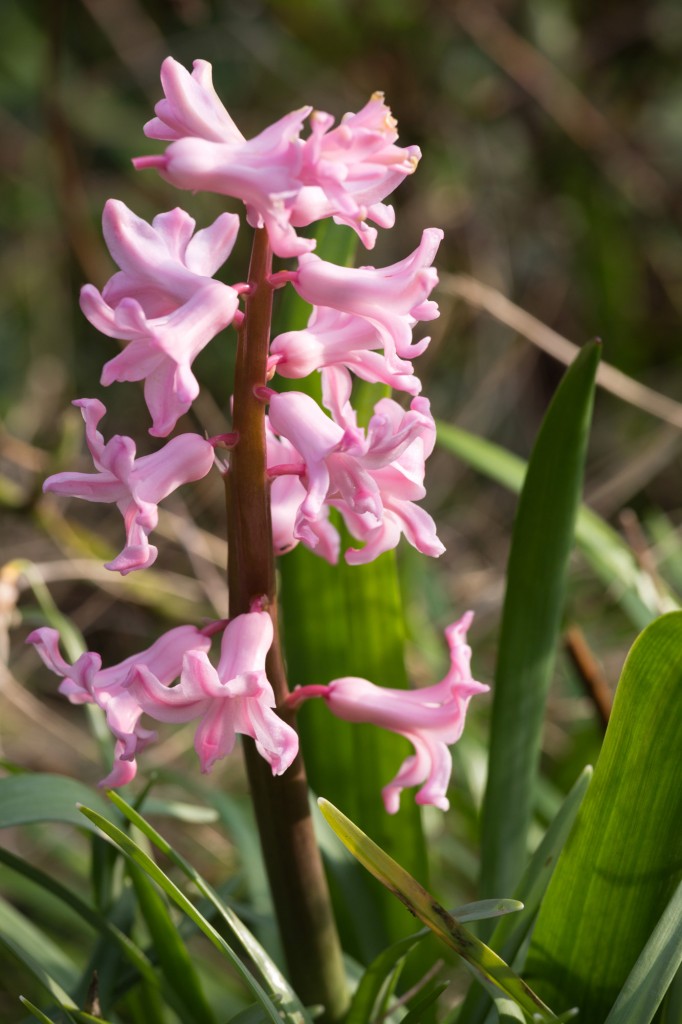
Again, if you click this image you will get a 2000 pixels high version. The Canon colour – or maybe the Auto White Balance – is better than the Alpha shot which follows. It may be down to lens colour transmission, as the 1985 Minolta glass is yellower than the Canon. I measured the transmission using a Kenko Color Meter (the new version of the classic Minolta Colormeter IIIF). The Minolta is roughly 5Y+5G and would need a 5B+5M filter pack to match the Canon lens transmission.
Here’s the Minolta lens shot, closer because of the 1.1m focus and 210mm focal length:

Again, clicking on the image will get you to a 2000 pixel high size.
These close-ups had me really thinking. I had to go back and check the settings. I can assure you the pix really are from a distance of 10cm apart – I did not move, I just squatted back a bit with the Canon; the lenses were at 200mm and 210mm; the apertures were both f/11, both cameras were at ISO 320, both gave the same 1/160th exposure. Yet just study the bokeh (differential focus) of the Minolta images. Look at the thickness of the blurred dry plant stem crossing upper right in the background. Look at the green leaf behind the hyacinth. Study the larger version for the focus point in each case (it’s comparable). The beercan just seems so much better able to separate out the subject from the background, without losing depth of field within the flower. Yet if you look through the two lenses from the back element end, wide open, the Canon appears to have a huge aperture by comparison – a really wide exit pupil.
Does it all prove anything?
So, what do I conclude? Well, I know from many years of using the 70-210mm that it can benefit from an even deeper hood, maybe on the scale of the Canon. It’s not a contrasty lens, and it can get some serious internal reflection – big flare patches, even veiling the entire frame. And on some earlier cameras even APS-C size, my earlier examples of this lens had been prone to very strong purple fringes. But I have never had an unsharp example and some of our best, sharpest digital shots have come from the classic 70-210mm beercan.
I’ve already been finding just what a transformation Adobe’s Camera Raw 6.7 beta (release candidate) makes with its auto analysis of the image to apply CA removal. Distortion and vignetting just aren’t significant issues with tele zooms of this type, so full lens profiles are hardly needed (and they are very difficult to make, you need a working distance most studios or homes do not contain).
Using this rather beaten-up example makes me think that it would be good, again, to find a mint condition little used one. It is a lens with interesting properties; it is a true zoom, and a constant aperture, which means that if you lock the focus down and shoot video you can zoom without losing sharpness (many modern ‘zooms’ are varifocal not parfocal, and shift focus as you zoom) and without any aperture jumps (only constant aperture lenses offer you this).
Most of all, comparing this lens with the relatively expensive and much larger Canon it’s clear that the performance is either equal, or better. Take into account advances in coatings, and the effects of age on any lens, and I would have to think a new version of exactly this same Minolta lens would be stunningly sharp and ideal within the Alpha system. It would be a perfect companion for the 16-50mm, or 24-70mm, on APS-C or full frame.
Full size images for subscribers only
If you are a registered subscriber to photoclubalpha, you can go to our download page for this article, and get the full size (JPEG quality 10, sRGB) images for all the shots here except the chicken pix which are already available clipped as 100% views. It is very interesting to study the twigs at the extremes of the 70mm shots from both lenses, look at the level of colour-fringe induced tinting to out of focus details, and affirm that the legendary status of the ‘beercan’ may indeed be deserved.
And, as a final point, though I am sure the Canon will win me over in low light situations and many other ways, these tests certainly proved that the Alpha 900 has not been made obsolete by almost four years of progress.
– David Kilpatrick
















